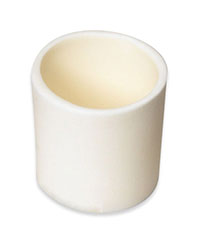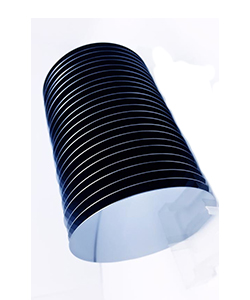 +86-731-89578196
+86-731-89578196
 [email protected]
[email protected]
- Home
- Our Company
-
Products
Sputtering Targets

- Industries
- Blog
- FAQ
- Contact Us
Sputtering Targets Overview: Everything You Need to Know

If you work with materials or electronics, you might have heard of "sputtering targets." It can be confusing if you're new to it, but they are basically materials used to put thin films on electronic devices. There's a lot to learn about them, like the different types and methods used. This guide covers everything you need to know, whether you're a beginner or an expert in thin film deposition.
What are sputtering targets made of?
Sputtering targets are made of various materials depending on their purpose. These can be metals, ceramics, alloys, or composites.
Metal targets are commonly used because they conduct heat and electricity well and can create many different alloys. Examples of metals used for sputtering include gold, silver, copper, aluminum, and titanium.
Ceramic targets are known for their strength, resistance to wear, and resistance to chemicals. Examples of ceramics used for sputtering include aluminum oxide, silicon dioxide, and titanium dioxide.
Alloy targets are made by mixing two or more metals to create specific physical or chemical properties. For instance, a mixture of gold and silver can create a thin film that is conductive, but not as much as pure gold or pure silver.
Composite targets are produced by mixing different materials, such as metal and ceramic, to create a specific combination of properties. For example, a composite target made of copper and aluminum oxide can produce a thin film that is highly conductive and adheres well to a surface.
What is sputtering and how does it work?
Sputtering is a way to transfer material from a sputtering target to a substrate surface. This happens in a vacuum chamber when a low-pressure gas (usually argon) is introduced.
The gas is turned into a plasma by an electrical discharge, creating positively charged ions and free electrons. These ions move towards the sputtering target and hit its atoms, knocking them loose. These atoms then travel through the vacuum chamber and stick to the substrate surface, creating a thin film.
There are different ways to sputter, like DC sputtering and RF sputtering, reactive sputtering, and magnetron sputtering. Each way has its pros and cons, depending on the application and desired properties of the thin film.
Types of Sputtering Targets
Sputtering targets are made of different materials to create thin films. There are four main types of sputtering targets:
- Metal targets:These are widely used because they conduct heat and electricity well. They're made from gold, silver, copper, aluminum, and titanium.
- Ceramic targets: These are hard, wear-resistant, and chemically stable. Typical ceramics used include silicon dioxide, aluminum oxide, and titanium dioxide.
- Alloy targets: These are made by combining two or more metals to create specific properties. For example, an alloy of nickel and chromium could be used to make Nickel Chromium Targets.
- Composite targets: These are made by combining two or more materials of different types to create specific properties. For example, a copper and aluminum oxide composite target.
Applications of sputtering targets
Sputtering targets are used to make thin films in many different industries. These thin films are used to make things like semiconductor manufacturing, hard drives, and solar panels.
In semiconductor manufacturing, sputtering targets are used to put tiny bits of metal and other materials onto silicon wafers. This makes the complicated structures that are needed for our electronic devices to work.
In hard drive manufacturing, sputtering targets are used to put thin films of magnetic materials onto the disks. This lets us store vast amounts of digital data.
In making lenses and mirrors, sputtering targets are used to put thin films of metals and other special materials onto the glass. This makes the lenses and mirrors work better.
In making solar panels, sputtering targets are used to put thin films of metals and other materials onto silicon wafers. This makes complicated structures that can turn sunlight into electricity.
Factors to think about when choosing sputtering targets:
- Material: Pick the material with the properties you need for the thin film you want to create, and that can be used with your deposition method.
- Purity: Keep the material as pure as possible, since impurities can mess up the properties of the thin film you're making.
- Size and shape: Choose the size and shape of the target based on what you're coating and the deposition system you're using.
- Deposition method: Choose the method that will give you the properties you want for your thin film, and that works with the material and what you're coating.
Quality Control and Testing Methods for Sputtering Targets
Making sputtering targets of good quality is very important in manufacturing. When making these targets, we need to check that the material is pure and doesn't have any dirt or other stuff in it. We also need to make sure that the target has the right size and shape, and that it has a smooth surface. Lastly, we need to make sure that it is not broken or dirty when it gets to the factory.
Testing the Material
We test the material to make sure it is pure and doesn't have any dirt or other stuff in it. Testing instruments like X-ray machines, inductively coupled plasma (ICP) analysis, and glow discharge mass spectrometry (GDMS).
Checking the Dimensions
We check the size and shape of the target to make sure it meets the requirements. We use machines like optical profilometry, coordinate measuring machines (CMM), and laser scanning
Verifying the Surface Finish
We check the surface of the target to make sure it has the required surface finish and roughness. We use machines like scanning electron microscopy (SEM), atomic force microscopy (AFM), and optical microscopy.
Checking for Damage and Dirt
We check for any damage or dirt on the target to make sure it is not broken or dirty during transportation and storage. Techniques used for this include visual inspection, leak testing, and vacuum packaging.
Maintaining and Handling Sputtering Targets
To make sure your sputtering targets last long and perform well, you need to take good care of them. Here's how:
- Store targets in a clean, dry place, away from things that might make them dirty.
- Handle targets carefully, using clean gloves and tools so you don't add dirt to them.
- Check targets often for wear and tear, like cracks or pits, which can make them work worse.
- Clean targets often to get rid of any dirt or other stuff that has built up on them.
Conclusion:
Sputtering targets are important for making high-quality electronics, optics, and other advanced materials. Whether you're new to thin film deposition or already know a lot about it, this guide has given you a good idea of what you need to know about sputtering targets.
To make good films, it's important to know about the different types of targets, how they're made, and how to check their quality. As a sputtering target supplier, we can give you some valuable suggestions if you want to solution for your project.











